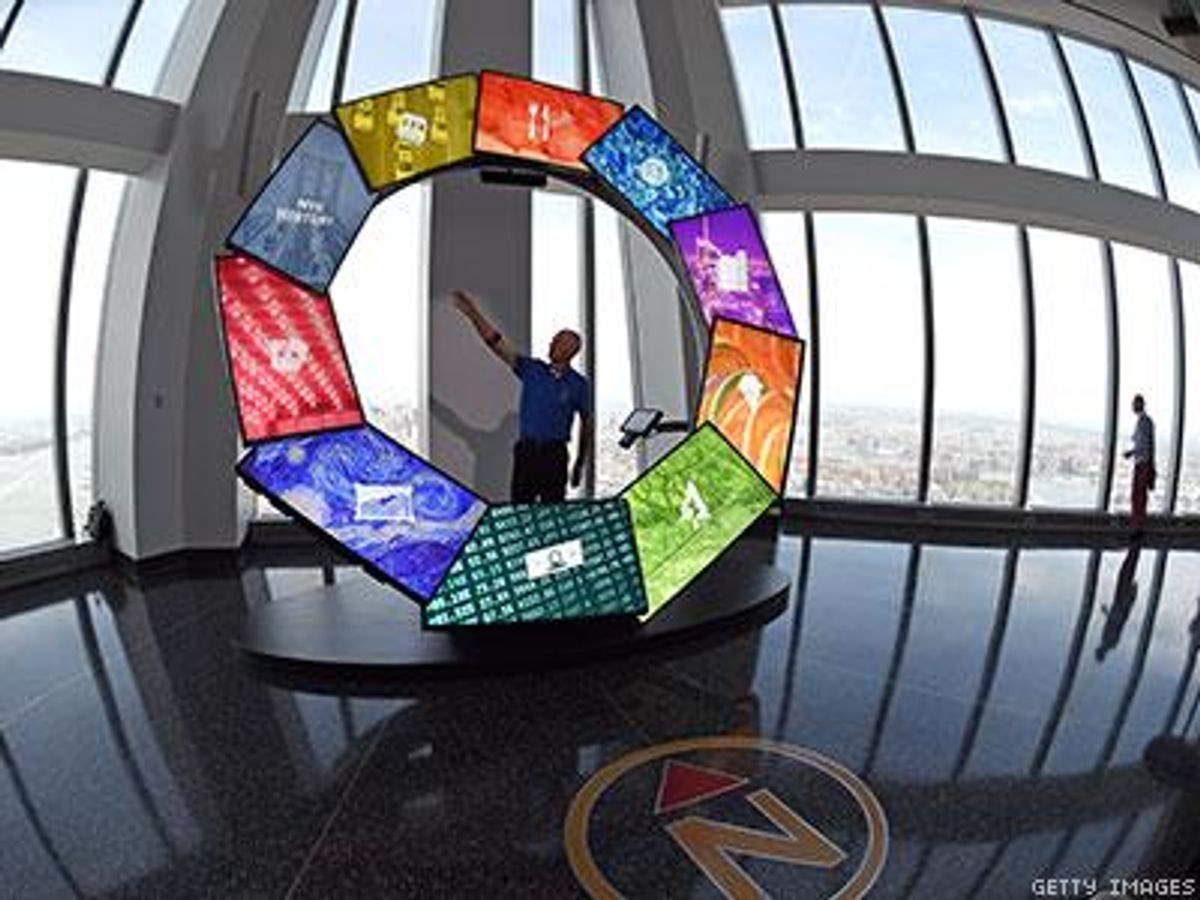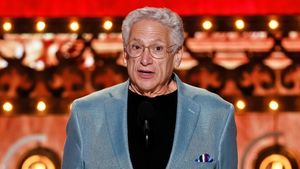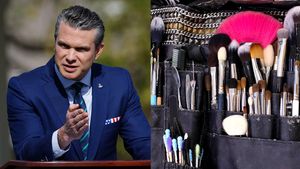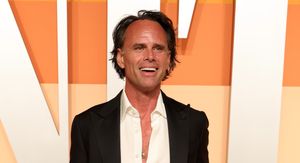One World Trade Center is now open to the public in New York City, a towering tribute to resiliency in a world threatened by terror and hate, and a victory of love for those who lived openly as lesbian, gay, or bisexual.
After 11 years of construction and fortification and more in the planning, the glass skyscraper once dubbed the Freedom Tower soars 1,776 feet over Lower Manhattan. It is adjacent to the original World Trade Center, the site of the attacks of September 11, 2001.
On that day, 2,977 people died, including 246 on the four planes, 2,606 in the World Trade Center complex and in the surrounding area, and 125 at the Pentagon.
At least two dozen of those victims were openly gay, lesbian, or bisexual. Some of their stories have been told here at The Advocate, and they are memorialized both at street level and in a museum that takes visitors into the cavern excavated from the ruins of the Twin Towers that the world came to know as Ground Zero.
But those dark days and images are left behind, when one steps into a Sky Pod for the elevator ride a quarter of a mile up, to One World Observatory: an enclosed observation deck rising 1,250 feet above street level.
As The Wall Street Journal's critic at large, Edward Rothstein noted:
"There is no intention here to mourn the destruction; that is reserved for ground level for the 9/11 memorial and museum. Here we are in a building meant to replace those destroyed towers; the preoccupation is not with the past, but the present."
The tower itself boasts 3 million rentable square feet of space and a 55-foot high office lobby, and is equipped with 54 high-speed destination dispatch passenger elevators.
The price of admission to the Observatory is steep: $32 a person, $15 extra if you want to rent a tablet that serves as a guide. There are no open-air sections, and sensations of precariousness or vertigo are avoided, but there is also a transparent circular area that you can walk on; it seems as if you are staring straight down at the street below -- and not at video screens mounted under the floor showing live images from outdoor cameras.
As for the view, Rothstein said it best:
"The viewing spaces are stunning. I recall the old World Trade Center observatory as cramped. Amazement had to be pried out of it. The street was seen by peering through strips of window. Here, though, broad expanses extend in all directions."
Estimates are that 3 million to 4 million visitors -- about one thousand an hour -- will take in the breathtaking vista, before now only visible to those in helicopters, such as those that hovered near the original World Trade Center towers as they collapsed on that fateful morning 14 years ago.
The memories are still fresh despite being more than a dozen years old, of when the southern tip of Manhattan -- including the gay mecca of Greenwich Village -- became a militarized zone. Only residents flashing photo IDs could pass beyond the patrolled border. At the far end of Christopher Street, military and fire trucks zoomed up and down the West Side Highway. A closed sign hung in the window of the famed Stonewall Inn.
Overnight, "thousands of fliers of missing persons went up," recalled Jeffrey DiGangi, a 36-year-old designer from the West Village. Lampposts, sides of buildings, and telephone booths were wallpapered with the images of those lost and missing.
But in the devastation, there was also a sense of community that many had not seen since the worst days of AIDS. Another West Village resident, 39-year-old Gary Spino, said he walked around the neighborhood those first nights "because I wanted to be with others, and the streets were filled with gay and lesbian people. Everyone was crying and hugging."
Spino eventually made his way to the Hudson River and joined friends from his gym in a human assembly line--spreading mustard on bread, piling on lunch meat, slicing tomatoes, and bagging sandwiches, fruit, and cookies into care packages for the rescue workers.
"It was the greatest thing I've been a part of in ages," he says. "It wasn't about being a gay person or a straight person or a financial person or an artist. There were little women in nuns' outfits standing next to gym bunnies in tight shorts, and we were all pitching in together."
Jessica DuLong, an assistant fireboat engineer and a 28-year-old bisexual writer from Brooklyn, spent three days and nights with her team working around the clock, pumping water as needed. The Fire Department of New York told DuLong the water she and her group pumped probably saved 200 lives.
Here are the 24 lesbians, gays and bisexuals known to have been among the victims at Ground Zero, the Pentagon and in Pennsylvania:
Father Mychal Judge, chaplain to both the FDNY and the New York Press Club, a man remembered by friend Edward Maloney as "neither out nor closeted. He knew how to walk that fine line and work behind the scenes. He brought bravery, dedication, loyalty -- and a touch of sexuality -- to the two institutions he cherished: the church and the fire department. He loved moving in those two male worlds." According to his biographer, Daily Beast columnist Michael Daly, Judge died in the vast lobby of 1WTC. Seeing dozens of jumpers crashing onto the plaza, he cried out fervently and repeatedly, "Jesus, please end this right now! God, please end this!" Judge was struck and killed by concrete and debris from the collapsing South Tower, flying through the North Tower lobby, at speeds of over 100 mph. He was designated as Victim Number 1 because his was the first body recovered from the scene.
Mark Bingham, a 31-year-old public relations executive, was on board United Airlines Flight 93 and among the passengers who are believed to have struggled with highjackers and forced the aircraft to crash outside Pittsburgh instead of its believed-to-be intended target in Washington, D.C. Among his mourners was Paul Holm, 40, Bingham's former partner.
Renee Barrett-Arjune of Cantor Fitzgerald died a month and a week after the attacks due to critical burns she suffered escaping the towers before they collapsed. She was a member of the Metropolitan Community Church of New York and left behind a son, Eddie, and her life partner, Enez Cooper.
Graham Andrew Berkeley, 37, director of product development for software giant Compuware, declared his love to boyfriend Tim Fristoe before boarding United Flight 175 in Boston to attend a software conference in Los Angeles. His plane was the second to crash into the World Trade Center. He was a native of England who lived in Boston.
Pamela Boyce, 43, was assistant vice president of accounting for Carr Futures Inc. She was working in her 92nd-floor office at 1 World Trade Center when the building was hit by the hijacked American Airlines Flight 11. She is remembered by Catherine Anello, her partner of 6 1/2 years.
David M. Charlebois, 39, was the out and proud copilot of American Airlines Flight 77, which was overtaken by hijackers and crashed into the Pentagon.
Eugene Clark, 47, worked for Aon Consulting on the 102nd floor of the South Tower. He left a partner of 11 years, Larry Courtney.
Jeffrey Dwayne Collman was a flight attendant aboard American Airlines Flight 11. He was survived by Keith Bradkowski, his partner of 11 years.
Luke A. Dudek, 50, was the food and beverage controller at Windows on the World and was survived by his partner of 20 years, George Cuellar.
J. Joseph Ferguson, 39, was aboard American Airlines Flight 77, which crashed into the Pentagon after taking off from Washington's Dulles airport. It was the first leg of Ferguson's trip to California's Channel Islands, where he was to conduct an educational field trip for National Geographic.
Carol Ann Flyzik of New Hampshire died aboard American Airlines Flight 11, bound for Los Angeles. It was the first of two to crash into the World Trade Center. She left behind her partner of nearly 13 years, Nancy Walsh.
Ronald L. Gamboa, 33, who managed three Gap stores in Santa Monica, Calif., and Dan Brandhorst, 42, a lawyer and partner in PricewaterhouseCoopers, had been together 14 years. They were aboard hijacked United Airlines Flight 175, the plane that plowed into the South Tower of the World Trade Center, killing them and their 3-year-old adopted son, David. They wweres returning to their Hollywood Hills home from their annual trip to Provincetown, Mass.
Sheila M.S. Hein, 51, worked of the U.S. Army's management and budget office and died in the Pentagon. Her partner, Peggy Neff, was the first person in a gay relationship to receive federal 9/11 compensation.
William Anthony Karnes, 37, worked at Marsh & McLennan and was also killed in 1 WTC and left a partner, John Winter.
John Richard Keohane, 41, was killed by falling debris when the South Tower collapsed. At that moment, he was with Michael J. Lyons, his partner of 17 years. Lyons survived but took his own life in 2002.
Michael Lepore, 39, project analyst at Marsh & McLennan, left a partner of 18 years, David O'Leary.
Waleska Martinez, 37. died aboard Flight 93. She was survived by her longtime partner, Angela Lopez.
Patricia Ann McAneney, 50, worked for Guy Carpenter Insurance and was the fire marshal of her floor in 1 WTC. She was survived by her partner of 18 years, Margaret Cruz.
Wesley Mercer, 70, a decorated Army veteran, and VP of security for Morgan Stanley, helped evacuate all employees from the 44th floor of 2 WTC. His partner of 26 years was Bill Randolph.
Philip Paul "Roxy Eddie" Ognibene worked as a bond trader for Keefe, Brunette & Woods on the 89th floor of 2 WTC.
Seamus L. ONeal was survived by partner Tom Miller.
Catherine T. Smith worked on the 97th floor of one of the twin towers and left her partner of six years, Elba Cedeno.
Unknown to this day are the firefighters, paramedics, police officers and everyday citizens who were not openly gay or lesbian, who also perished September 11. As Edgar Rodriguez of the NYPD wrote shortly after the attacks, "We all learned too quickly and in too cruel a way that the closet is a terrible place to grieve."
WATCH a timeline of the 11-year construction of One World Trade Center below.



















































































